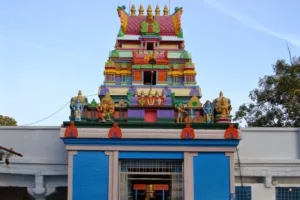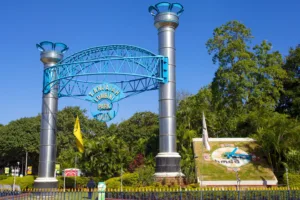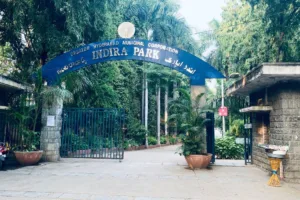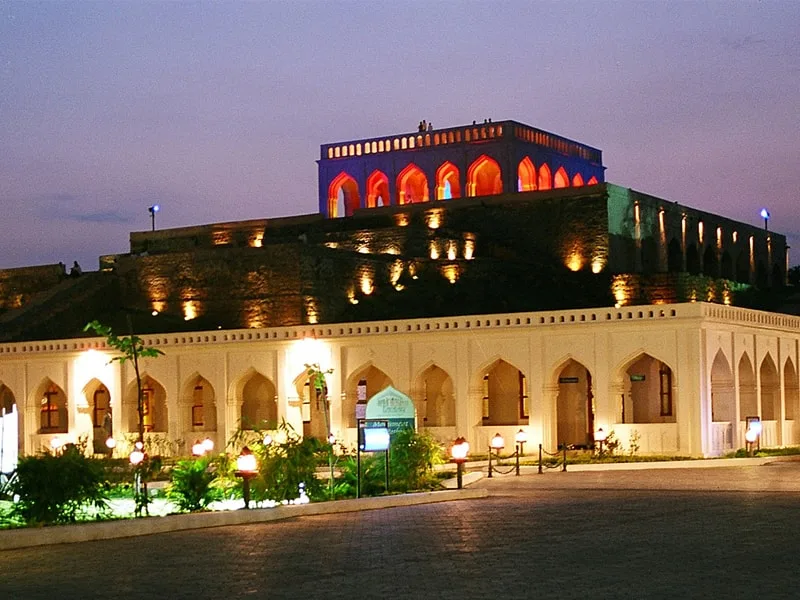Gaya Travel Guide – Gaya Tourism
About Gaya:
Nestled on the banks of the Phalgu River in Bihar, Gaya stands as a revered pilgrimage site with a history dating back thousands of years. Known for its spiritual significance and cultural heritage, Gaya attracts pilgrims and travelers alike, offering a unique blend of tradition and tranquility.
Best Time To Visit Gaya:
The ideal time to experience Gaya’s spiritual ambiance is during the winter months, from October to March, when the weather is pleasant and conducive to exploration.
How To Reach Gaya:
Gaya is well-connected by road, rail, and air. The city has a railway station, an airport, and a network of roads that facilitate easy access for travelers.
Transport In Gaya:
Local transport in Gaya includes auto-rickshaws, cycle-rickshaws, and taxis, providing convenient options for exploring the city and its surrounding areas.
People Of Gaya:
Gaya’s population is characterized by warmth and hospitality, reflecting the city’s cultural richness and the deeply ingrained values of its residents.
Languages Of Gaya:
Hindi is the predominant language spoken in Gaya, while English is understood in areas frequented by tourists.
History Of Gaya:
Gaya’s history is intertwined with mythology, with references in ancient texts. The city has witnessed the rise and fall of empires, leaving behind a legacy of historical landmarks and sacred sites.
Culture Of Gaya:
Gaya’s cultural tapestry is woven with religious rituals, festivals, and traditional practices. The city is a melting pot of diverse cultural influences, creating a unique and enriching experience for visitors.
Weather Of Gaya:
Gaya experiences a subtropical climate, with hot summers, a monsoon season, and cool winters. The winter months are particularly pleasant for exploring the city and its surroundings.
Best Places to Visit in Gaya:
Mahabodhi Temple: A UNESCO World Heritage Site, the Mahabodhi Temple is one of the holiest Buddhist shrines, marking the spot where Siddhartha Gautama attained enlightenment. Pilgrims from around the world visit this iconic temple.
Bodhi Tree: Adjacent to the Mahabodhi Temple, the Bodhi Tree is believed to be a descendant of the original tree under which Buddha attained enlightenment. Pilgrims meditate under its sacred branches.
Vishnupad Temple: Dedicated to Lord Vishnu, Vishnupad Temple is an ancient Hindu temple located on the banks of the Phalgu River. The temple’s footprint is believed to be that of Lord Vishnu.
Dungeshwari Cave Temples: Located around 12 kilometers from Gaya, these caves are associated with Buddha’s years of ascetic practices before his enlightenment. Pilgrims explore the caves and reflect on Buddha’s spiritual journey.
Sujata Kuti: This site commemorates the offering of rice milk to Buddha by Sujata, a village girl, before his enlightenment. Pilgrims visit Sujata Kuti to pay homage to this compassionate gesture.
Barabar Caves: A short drive from Gaya, the Barabar Caves are ancient rock-cut caves dating back to the Mauryan period. These caves are known for their architectural significance and ancient inscriptions.
Bodhi Sarovar: A sacred pond near the Mahabodhi Temple, Bodhi Sarovar is believed to have healing properties. Pilgrims take ritual baths in its waters as part of their spiritual journey.
Thai Monastery: A symbol of the cultural ties between India and Thailand, the Thai Monastery showcases traditional Thai architecture and serves as a peaceful retreat for meditation.
Chinese Temple and Monastery: Reflecting Chinese architectural aesthetics, this temple and monastery are testament to the cultural exchange between India and China. Pilgrims appreciate the serene ambiance and unique design.
Muchalinda Lake: According to legend, the snake king Muchalinda protected Buddha from rain during meditation. Muchalinda Lake commemorates this event, and pilgrims visit to reflect on the symbiotic relationship between nature and spirituality.
Animesh Lochana Chaitya: Buddha is said to have spent one week here gazing at the Bodhi Tree without blinking. Pilgrims visit this spot to pay homage to Buddha’s unwavering focus.
Ajapala Nigrodha Tree: This ancient banyan tree is believed to be the site where Buddha spent the fourth week after enlightenment, contemplating the implications of his teachings.
Archeological Museum: Located near the Mahabodhi Temple, the museum houses artifacts, sculptures, and relics excavated from the Buddhist sites in and around Gaya.
Bodh Gaya Multimedia Museum: An immersive experience for visitors, the multimedia museum provides insights into the life of Buddha through audio-visual presentations and interactive exhibits.
Royal Bhutan Monastery: A serene and beautifully crafted monastery, the Royal Bhutan Monastery represents Bhutanese architecture and is a place of meditation and cultural exchange.
In conclusion, Gaya stands as a spiritual haven, inviting travelers to explore its sacred sites, cultural landmarks, and historical treasures. Whether meditating under the Bodhi Tree, paying respects at Vishnupad Temple, or exploring the ancient Barabar Caves, Gaya promises a transformative and spiritually enriching journey for those seeking solace and enlightenment.

























